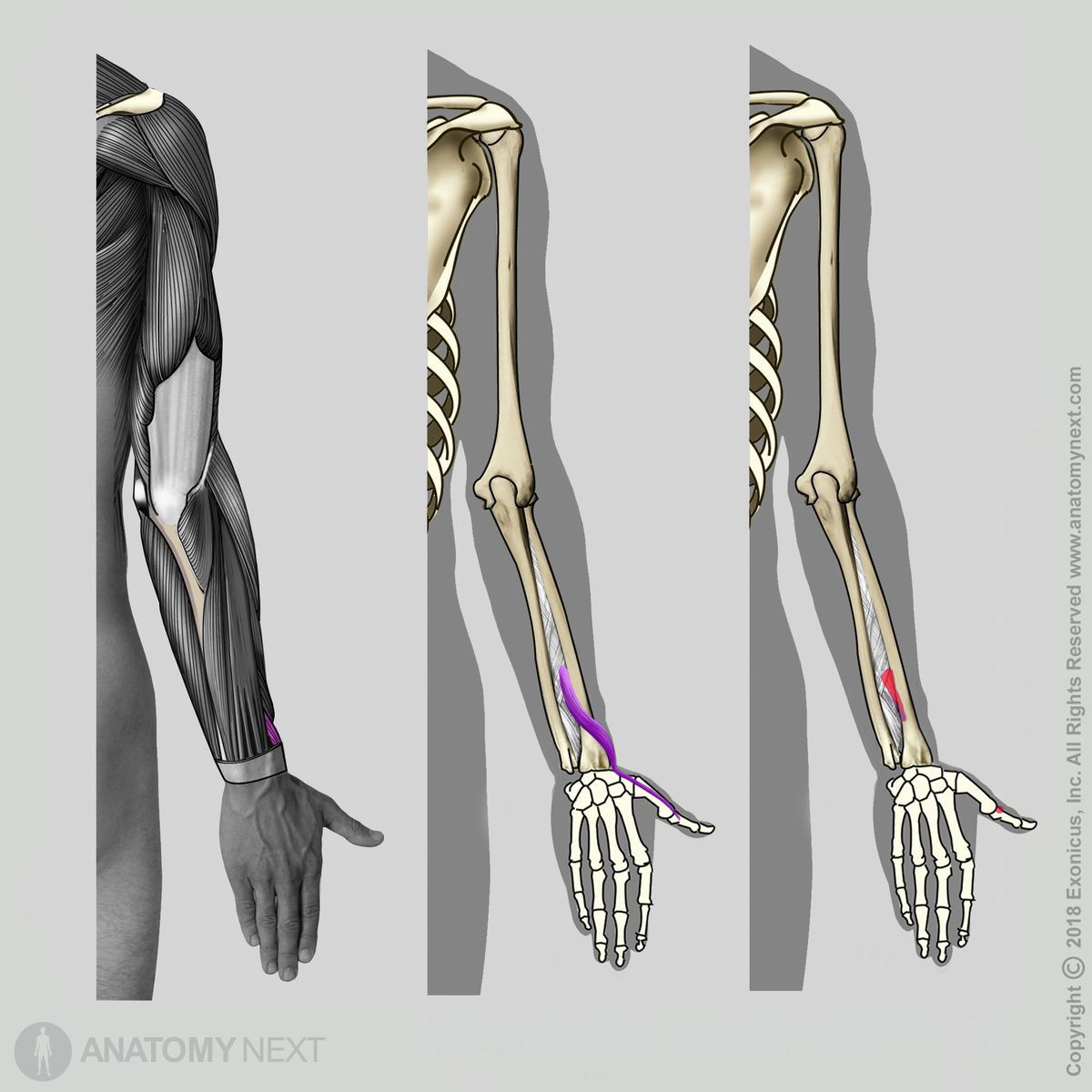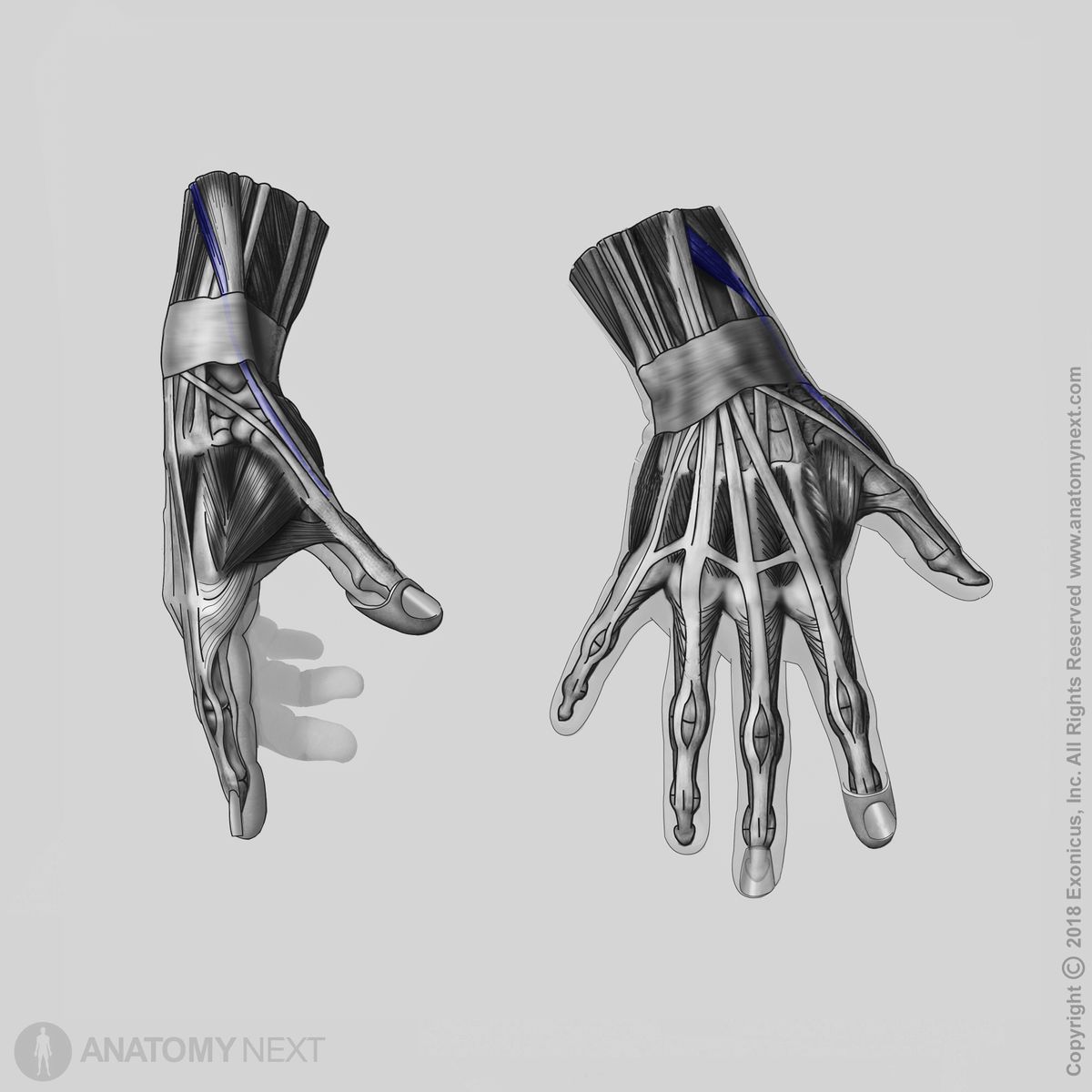- Anatomical terminology
- Skeletal system
- Joints
- Muscles
- Head muscles
- Neck muscles
- Muscles of upper limb
- Muscles of pectoral girdle
- Muscles of shoulder region
- Muscles of upper arm
- Muscles of forearm
- Anterior compartment
- Lateral compartment
- Posterior compartment
- Muscles of hand
- Thoracic muscles
- Muscles of back
- Muscles of lower limb
- Heart
- Blood vessels
- Lymphatic system
- Nervous system
- Respiratory system
- Digestive system
- Urinary system
- Female reproductive system
- Male reproductive system
- Endocrine glands
- Eye
- Ear
Extensor pollicis brevis
The extensor pollicis brevis (Latin: musculus extensor pollicis brevis) is a flat, thin and relatively short muscle of the forearm that extends between the radius and the proximal phalanx of the thumb. It belongs to the posterior compartment of the forearm muscles, and it lies in the second layer.
| Extensor pollicis brevis | |
| Origin | Posterior surface of distal radius, interosseous membrane of forearm |
| Insertion | Base of proximal phalanx of 1st finger |
| Action | Thumb extension |
| Innervation | Posterior interosseous nerve of radial nerve (C7, C8) |
| Blood supply | Anterior and posterior interosseous arteries |

Origin
The extensor pollicis brevis muscle originates from the posterior surface of the distal radius and interosseous membrane of the forearm.

Insertion
The extensor pollicis brevis inserts on the base of the proximal phalanx of the first finger.

Action
The extensor pollicis brevis muscle extends the thumb at the first carpometacarpal and metacarpophalangeal joints.

Innervation
The extensor pollicis brevis is innervated by the posterior interosseous branch of the radial nerve (C7, C8). The radial nerve arises from the brachial plexus.
Blood supply
The extensor pollicis brevis muscle receives arterial blood supply from the posterior and anterior interosseous arteries. Both are branches of the common interosseous artery.